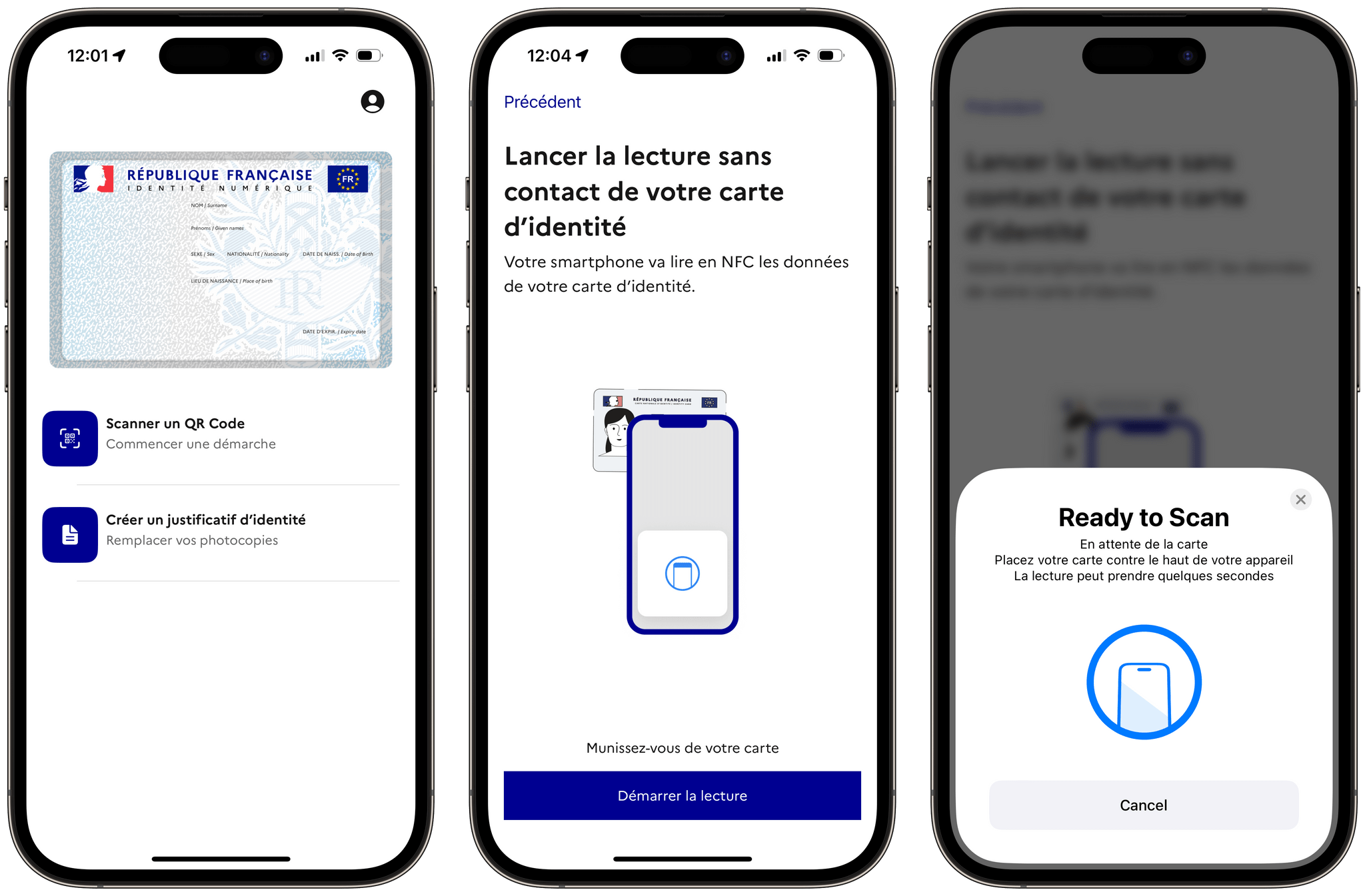Almost three years ago now, Apple announced that it would support adding state IDs and driver’s licenses to the Wallet app on the iPhone and the Apple Watch, with the feature first rolling out to a handful of US states. Today, digital IDs in Wallet still haven’t materialized in most of the states that committed to support the feature back in 2021, and Apple hasn’t announced any expansion of the feature beyond the US.
Here in France, the government has long pledged to offer the ability to get a digital ID for all holders of the redesigned national identity card that started rolling out in 2021. The new ID card format was to be smaller than the old one (finally reaching the size of any standard credit card), but more importantly, it would feature an RFID chip that would enable contactless interactivity with, say, a dedicated terminal or any NFC-enabled smartphone. Fast-forward to today, and with this new ID card now widely in the hands of French citizens, France’s government has released France Identité, an app that allows any French ID card holder to get a digital version of their ID or driver’s license on their smartphone.
While the app was publicly made available earlier this year on iOS and Android, I have been using the beta for close to a full year now. France Identité is a strange, frustrating mix of physical and digital that says a lot about the privacy concerns and technical issues that inevitably get raised when a state wants to take their IDs digital.
Let’s take a look at the app, what it can do, and how it differs from Apple’s vision for digital IDs.
To get started with France Identité, all you need to do is scan your French ID card. Since the app is leveraging the iPhone’s NFC chip, you just have to hold your ID card near the top of the iPhone for a few seconds. You are then prompted to choose a six-digit passcode. The process is fairly intuitive. Within a few minutes, you’re enrolled, and your ID card is available in the app.
The app’s settings are super limited. In fact, there is currently only one setting you can change: enabling Face ID. If enabled, Face ID is then always required to open the app, but it does not supplant the passcode that you regularly have to enter in the app to perform actions.
Currently, France Identité can be used for three specific use cases:
- Presenting your ID in person.
- Logging into France’s online public services.
- Generating a proof of identity without having to send a copy of your real card.
1. Presenting your ID in person. Presenting your French digital ID is completely straightforward. Unlike Apple’s implementation in the Wallet app, which assumes the presence of a contactless terminal on the other end, here the process feels very analog. Simply open the app, and the card is immediately visible. So, you should just be able to present your phone to an agent so they can read your information on the screen. Every piece of personal information that’s present on your physical card is readily viewable in the app, including the unique ID card number.
While it should soon be possible to pick and choose what information to share in face-to-face situations, this feature is not available yet, so it’s an all-or-nothing kind of deal for now. It’s also currently unclear if you can present your digital ID instead of your physical card in all situations. For instance, France’s national train company (SNCF) is still refusing to accept France Identité as a valid way to present your ID to their agents in stations and aboard trains.
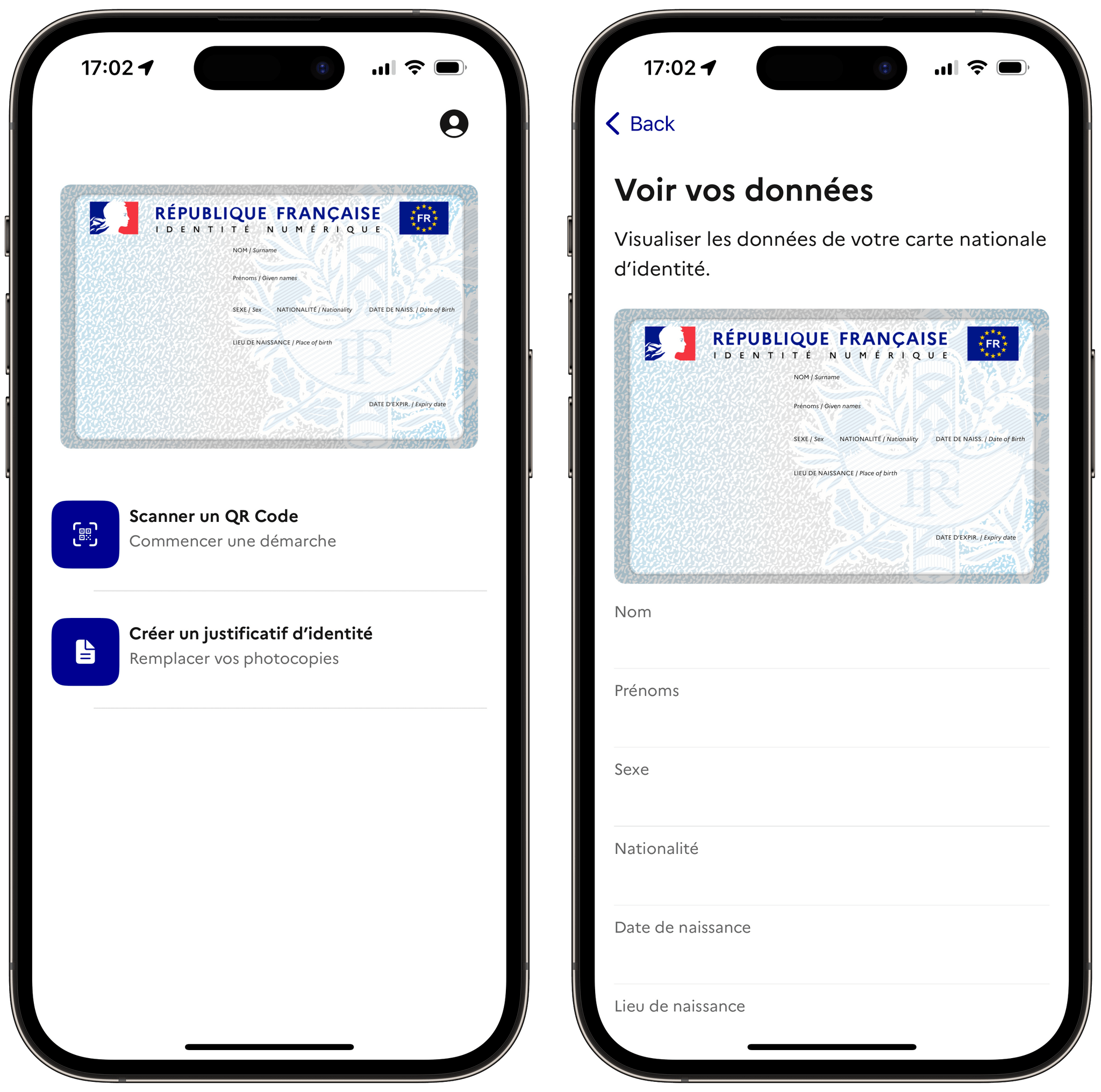
France Identité lets the card holder see all of their personal information on one screen. Note: France Identité automatically strips any personal information from screenshots.
This is very different from the way Apple envisions presenting your ID in person. In its various support documents on the feature, Apple specifically mentions that when using a state ID inside Apple Wallet, “you don’t need to unlock, show, or hand over your device to present your license or ID.” A contactless terminal is always needed. Although this significantly reduces the number of situations where it’s actually possible to present your digital ID instead of a physical ID card, this is an immense layer of protection for both your sensitive data and your iPhone that the French digital ID app does not have in its current state.
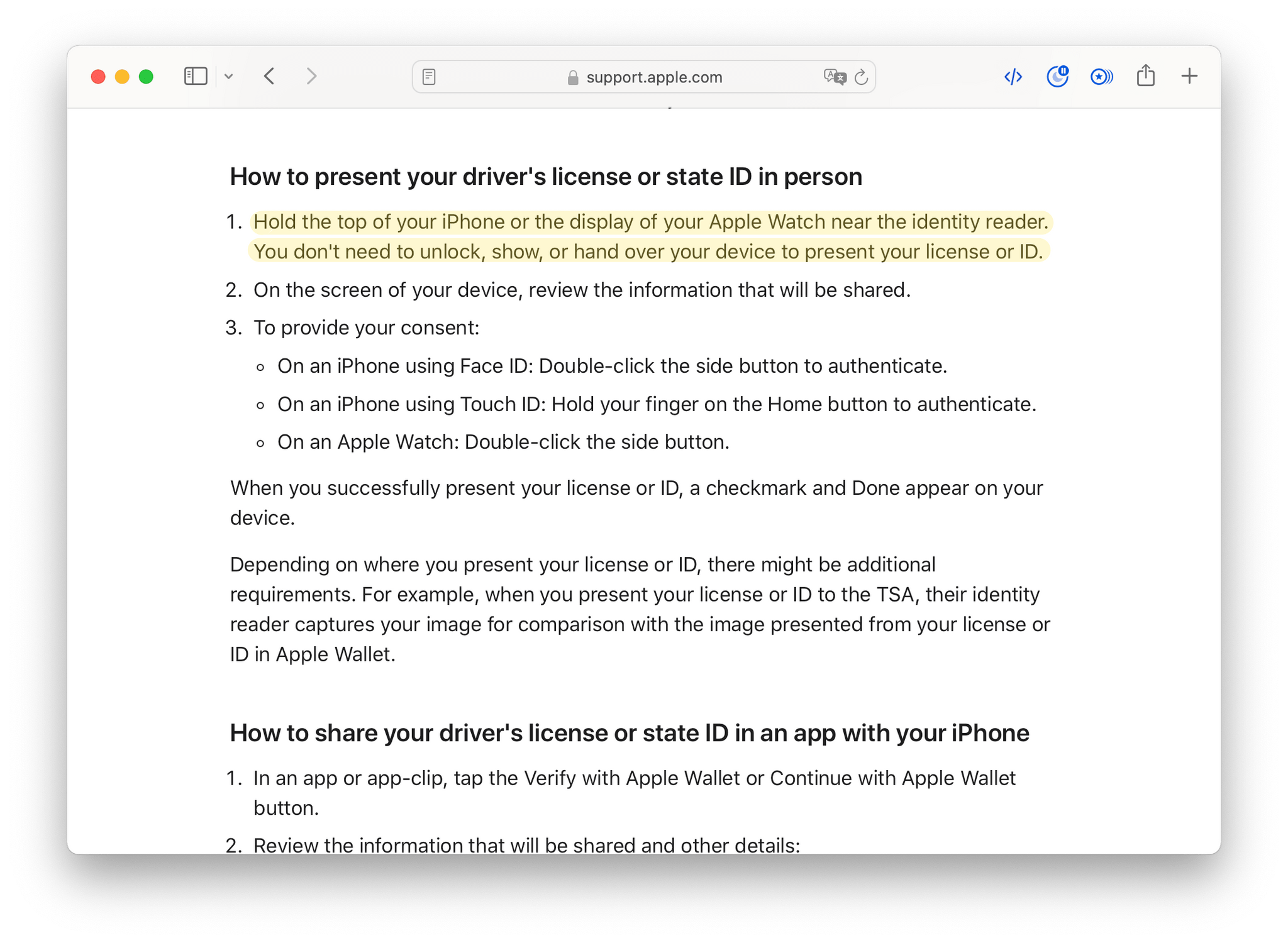
In person, digital IDs stored in Apple Wallet can only be presented to a contactless terminal according to Apple Support.
2. Logging into France’s online services. The French digital ID app can be used to sign in to most of France’s online public services. This includes, for instance, the official revenue tax website where French people go every year to pay their taxes (impots.gouv.fr), as well as other official portals like the French social benefits platform (caf.fr) and the national health service dashboard (ameli.fr). And let me tell you, the way France Identité works in this use case is weird. Let me walk you through the process.
When signing in to an online public service, you need to look for a button that says ‘Sign in with FranceConnect’, then select ‘France Identité’ as the authentication method. At this point, on your computer, you’re presented with a QR code. Now, open the digital ID app on your phone, and use it to scan the QR code. The app will show you a list of the personal information that will be shared in order to connect to the site, and you can either approve or cancel the connection. If everything is in order, tap ‘Approve’ to continue.
That’s it, right? No, to proceed, you now need to enter your digital ID passcode, even if you enabled Face ID in the app’s settings. But now, surely that’s enough to sign in, right? Nope, the app is now asking you to fetch your physical ID card and scan it with your iPhone. Hold the card near the top of your phone for about five full seconds, and now you’re done. You’re finally logged in.
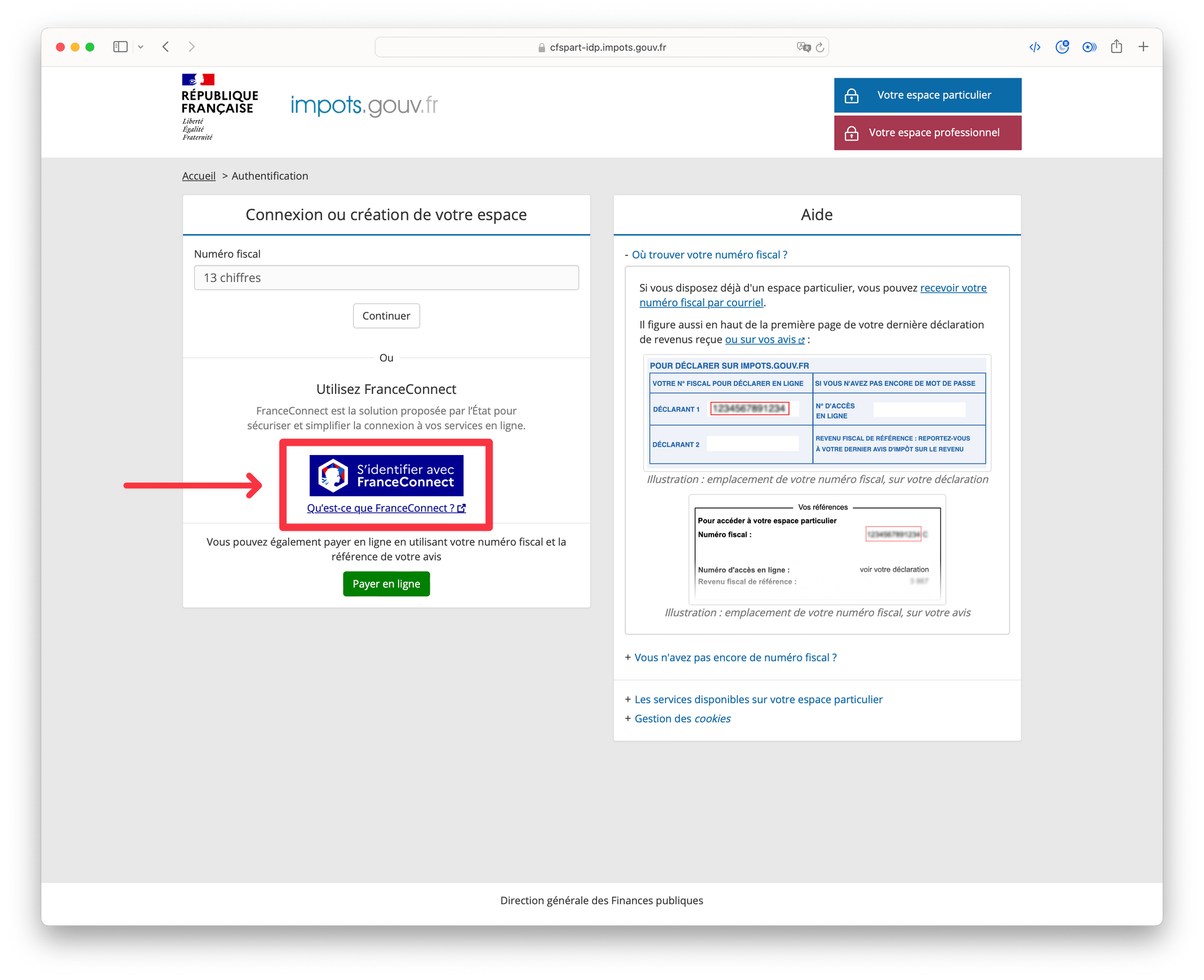
French ID card holders can log in to almost any French online public service using their digital ID by clicking the ‘Sign in with FranceConnect’ button.

Using France Identité to log in to an online public service is a five-step process involving scanning a QR code, approving the connection, entering your ID passcode, and scanning your physical ID card.
When I first went through this process, I assumed that scanning my physical card was only needed the first time, and at least not for a while after that. Unfortunately, I quickly realized that scanning the physical card is an integral part of the process that is required every time. I am sure that this choice was made for very specific security reasons, but having to fetch my physical card every time I need to log into one of those platforms really made me question the digital nature of this digital ID app.
In US states that support digital IDs in Apple Wallet, users can actually give access to specific information from their digital IDs to third-party apps. This can be used to restrict minors’ access to certain content, for example, in which case iOS would only let the app see the age data point after you have consented via Face ID. So it’s not unreasonable to imagine a government body allowing its residents to log in to official online services in this way. But as far I can tell, this method would never involve actually scanning a physical version of the ID.
 how information from IDs stored in Apple Wallet can be shared to third-party apps.](https://cdn.macstories.net/applesupport-digitalid-sharetoapps-1714671043389.png)
Apple Support details how information from IDs stored in Apple Wallet can be shared to third-party apps.
3. Generating a proof of identity. This one is pretty cool. France Identité lets you generate a PDF that you can address to any person, organization, or body to prove your identity, without having to send a copy of your physical ID card. You can set an expiration date so that the document can’t legally be used after a certain amount of time and even fill in a specific purpose for the document so that it can’t legally be used in any other context than the one you specified. The generated PDF document includes a QR code that anyone also using France Identité can scan to verify its authenticity. It’s a pretty well-thought-out system.
The only issue is, once again, that you need to fetch your physical ID card and scan it every time you want to generate a proof of identity.
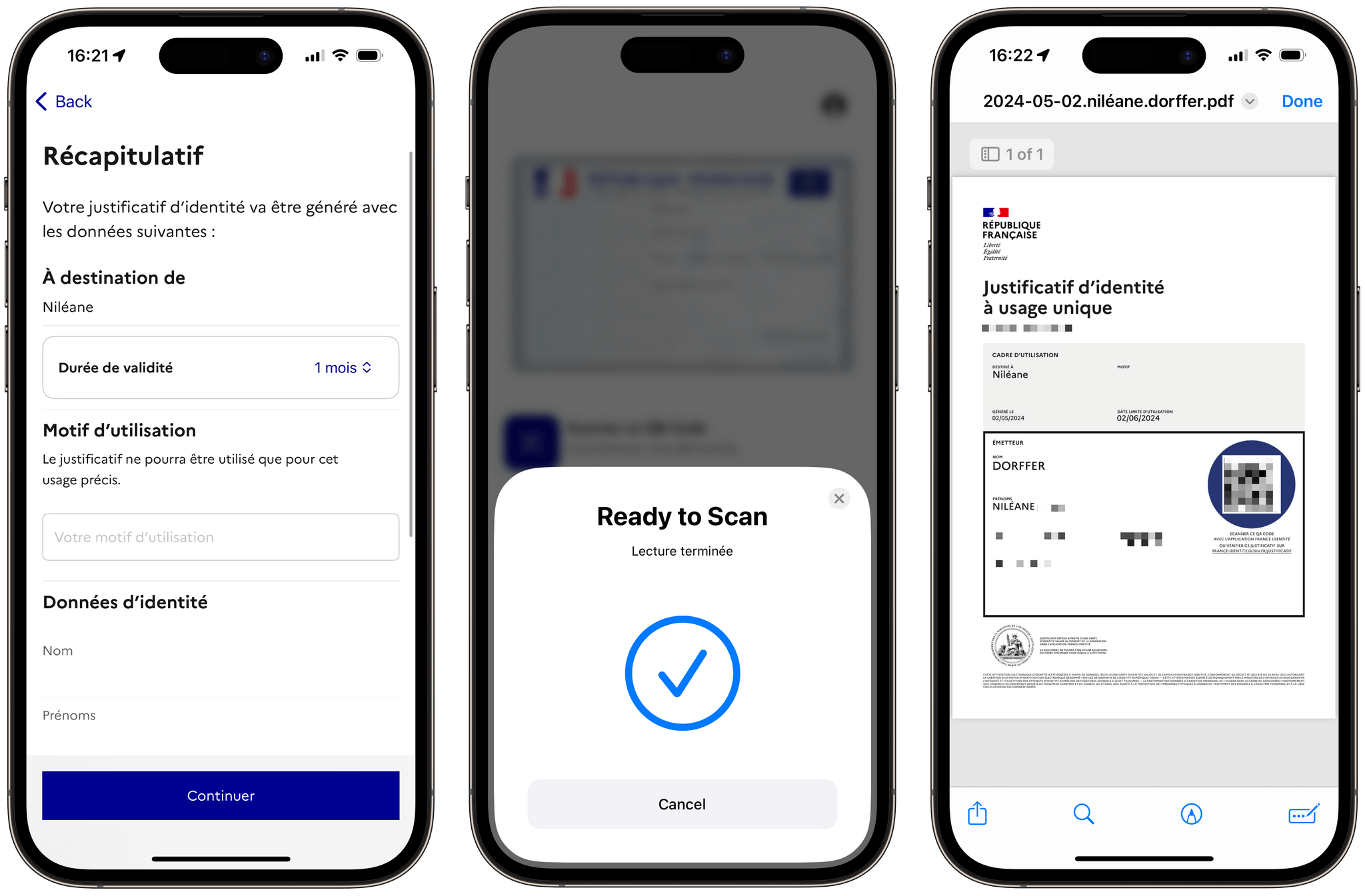
The French digital ID app can be used to generate a one-time-use proof of identity in the form of a PDF document containing a QR code.
The technical choices that were made here are interesting. I’m glad to see that they were able to leverage the RFID chip inside the card to make it easier to scan, and that the app’s UI is not nearly as bad as most other government-issued apps. I’m also thankful for its clever way of generating proofs of identity without having to give away all my information. Still, it’s hard to call France Identité a digital ID. Unlike Apple’s implementation of state IDs in Apple Wallet, where the physical ID card is only needed to add it the first time, France’s digital ID feels more like a companion to the existing physical ID that only serves as a bridge between it and online apps.
Unfortunately, it’s safe to assume that even if Apple had reached out to France’s government to support French IDs in the Wallet app, France would have probably refused. France isn’t historically known to trust US tech companies with its sensitive data, even when Apple says it’s encrypted and stored on-device. One fairly recent example of this dates back to 2020, when Apple and Google offered to natively support contact tracing in iOS and Android amidst the COVID-19 pandemic. At the time, while most European countries decided to get on board – including almost all of France’s neighboring countries – France notoriously refused to adopt the protocol, opting instead to ship its own contact tracing app with a homemade protocol.
Although the context is obviously very different, I see a small parallel between this story and France’s digital ID app that’s available today. Even if it doesn’t seem like Apple and Google are even trying to offer support for digital IDs outside the US for now, France could have chosen to wait. But instead, it went ahead and once again shipped its own implementation.
If you’re thinking, “But it’s still better than nothing,” I wish I could agree with you. Unfortunately, despite having had my French digital ID on my iPhone for close to a full year now, I still take my physical card with me everywhere I go, present my physical card in face-to-face situations out of fear that my digital one won’t be accepted, and almost never use France Identité to sign in to online public services because, most of the time, I just can’t be bothered to fetch my physical ID card to complete the five-step login process. France’s digital ID just isn’t digital enough to have made a difference in my life.


